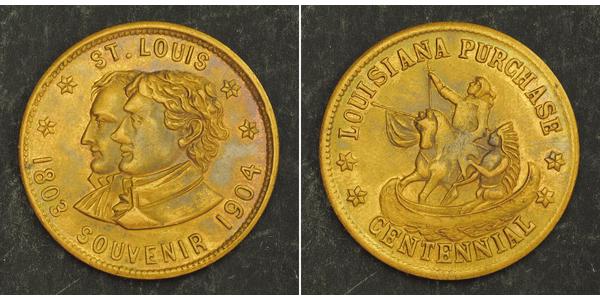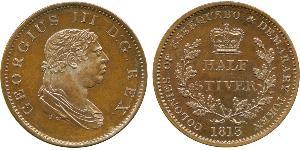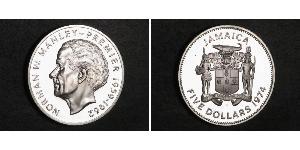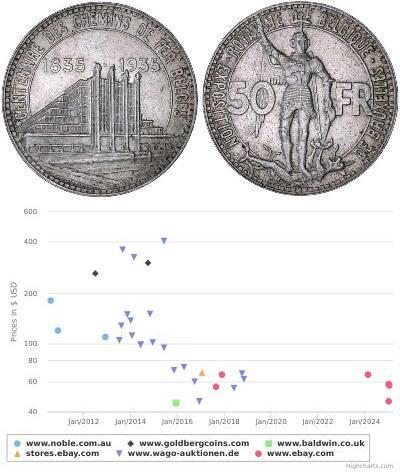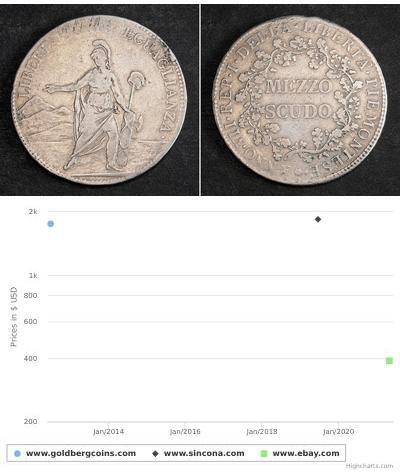1904, United States. Louisiana Purchase Exposition Brass Souvenir Medal. XF!
Mint Year: 1904 Denomination: Medal - Louisiana Purchase Exposition Condition: Minor pressure maarks (see the nose of Jefferson in obverse), otherwise XF-AU! Material: brass or yellow bronze Diameter: 26mm Weight: 6.45gm
Obverse: Conjoined busts facing left of Napoleon and Jefferson left. Legend: ** ST. LOUIS ** 1803 SOUVENIR 1904
Reverse: Spanish knight on a horse left, holding a sword and a flag left beneath native American Indian in a boat. Exergue: LOUISIANA PURCHASE ** CENTENNIAL **
The Louisiana Purchase Exposition, informally known as the Saint Louis World's Fair, was an international exposition held in St. Louis, Missouri in 1904.
In 1904, St. Louis hosted the world at a major international World's Fair. The Fair celebrated the centennial of the Louisiana Purchase (1803), one year late. It was delayed from a planned opening in 1903 to 1904, to allow for full-scale participation by more states and foreign countries. The Fair opened April 30, 1904, and closed December 1, 1904. Of notable interest is that St. Louis had held an annual Saint Louis Exposition since the 1880s as agricultural, trade, and scientific exhibitions, but this event was not held in 1904, due to the World's Fair.
The Fair's 1,200 acre (4.9 km²) site, designed by George Kessler, was located at the present-day grounds of Forest Park and on the campus of Washington University, and was the largest fair to date. There were over 1,500 buildings, connected by some 75 miles (120 km) of roads and walkways. It was said to be impossible to give even a hurried glance at everything in less than a week. The Palace of Agriculture alone covered some 20 acres (324,000 m²).
Exhibits were staged by 62 foreign nations, the United States government, and 43 of the then-45 U.S. states. These featured industries, cities, private organizations and corporations, theater troupes, and music schools. There were also over 50 concession-type amusements found on "The Pike"; they provided educational and scientific displays, exhibits and imaginary 'travel' to distant lands, history and local boosterism (including Louis Wollbrinck's "Old St. Louis") and pure entertainment.
19,694,855 individuals were in attendance at the fair.
Kessler, who designed many urban parks in Texas and the Midwest, created the master design for the Fair.
A popular myth says that Frederick Law Olmsted, who had died the year before the Fair, designed the park and fair grounds. There are several reasons for this confusion. First, Kessler in his twenties had worked briefly for Olmsted as a Central Park gardener. Second, Olmsted was involved with Forest Park in Queens, New York. Third, Olmsted had planned the renovations in 1897 to the Missouri Botanical Garden several blocks to the southeast of the park. Finally, Olmsted's sons advised Washington University on integrating the campus with the park across the street.
In 1901, the commissioner of architects of the St. Louis Exposition selected Emmanuel Louis Masqueray to be Chief of Design of the Louisiana Purchase Exposition. In the position for three years, Masqueray designed the following Fair buildings: Palace of Agriculture, the Cascades and Colonnades, Palace of Forestry, Fish, and Game, Palace of Horticulture and Palace of Transportation, all of which were widely emulated in civic projects across the United States as part of the City Beautiful movement. Masqueray resigned shortly after the Fair opened in 1904, having been invited by Archbishop John Ireland of St. Paul, Minnesota to design a new cathedral for the city.
As with the World's Columbian Exposition in Chicago in 1893, all but one of the Louisiana Purchase Exposition's grand, neo-Classical exhibition palaces were temporary structures, designed to last but a year or two. They were built with a material called "staff," a mixture of plaster of Paris and hemp fibers, on a wood frame. As at the Chicago world's fair, buildings and statues deteriorated during the months of the Fair, and had to be patched.
The Palace of Fine Art, designed by architect Cass Gilbert, featured a grand interior sculpture court based on the Roman Baths of Caracalla. Standing at the top of Art Hill, it now serves as the home of the St. Louis Art Museum.
The Administration Building, designed by Cope & Stewardson, is now Brookings Hall, the defining landmark on the campus of Washington University. A similar building was erected at Northwest Missouri State University founded in 1905 in Maryville, Missouri. The grounds layout was also recreated in Maryville and now is designated as the official Missouri State Arboretum.
Some of the mansions from the Exposition's era survive along Lindell Boulevard at the north border of Forest Park.
The huge bird cage at the Saint Louis Zoological Park, dates to the fair.
Birmingham, Alabama's iconic cast iron Vulcan statue was first exhibited at the Fair in the Palace of Mines and Metallurgy.
The Missouri State building was the largest of the state buildings, as Missouri was the host state. Though it had sections with marble floors and heating and air conditioning, it was planned to be a temporary structure. However, it burned the night of November 18–19, just eleven days before the Fair was to end. Most of the interior was destroyed, but some of the contents were rescued without damage, including some furniture and much of the contents of the fair's Model Library. Since the fair was almost over, the building was not rebuilt. After the fair, the current World's Fair Pavilion in Forest Park was built on the site of the Missouri building with profits from the fair in 1909-10.
Festival Hall contained the largest organ in the world at the time, built by the Los Angeles Art Organ Company. After the fair, it was placed into storage, and eventually purchased by John Wanamaker for his new Wanamaker's store in Philadelphia. See Wanamaker Organ for more details. The famous Bronze Eagle in the Wanamaker Store also came from the Fair. It features hundreds of hand-forged bronze feathers and was the centerpiece of one of the many German exhibits at the fair. Wanamakers became a Lord & Taylor store, and more recently a Macy's store.
Completed in 1913, the Jefferson Memorial building was built near the main entrance to the Exposition, at Lindell and DeBalivere. It was built with proceeds from the fair, to commemorate Thomas Jefferson, who initiated the Louisiana Purchase, as was the first memorial to our third President. It became the headquarters of the Missouri History Museum, and stored the Exposition's records and archives when the Louisiana Purchase Exposition company completed its mission. The building is now home to the Missouri History Museum, and the museum was significantly expanded in 2002-3.
The State of Maine Building, which was a rustic cabin, was transported to Point Lookout, Missouri where it overlooked the White River by sportsmen who formed the Maine Hunting and Fishing Club. In 1915 when the main building at the College of the Ozarks in Forsyth, Missouri burned. The school then relocated to Point Lookout where the Maine building was renamed the Dobyns Building in honor of a school president. The Dobyns Building burned in 1930 and the college's signature church was built in its place. In 2004, a replica of the Maine building was built on the campus. The Keeter Center is named for another school president.

|
Posted by:
anonymous 2019-04-02 |

